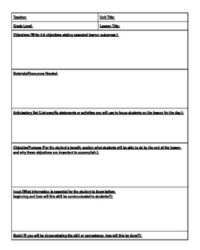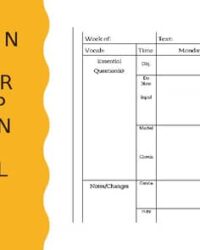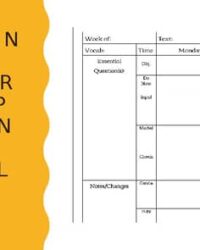Are you an educator looking for a robust framework to structure your lessons and truly maximize student learning? You’ve likely heard the name Madeline Hunter, a pioneering figure in educational theory whose work continues to influence countless classrooms worldwide. Her instructional model provides a clear, logical sequence for effective teaching, ensuring that every minute of class time is purposeful and productive. It’s more than just a set of steps; it’s a philosophy designed to enhance understanding and engagement.
Understanding and implementing the Madeline Hunter model can be a game-changer for new and experienced teachers alike. It offers a clear, sequential path from introducing a topic to ensuring students have mastered it, making the complex art of teaching feel more manageable and measurable. This structured approach helps teachers plan with precision, anticipate student needs, and reflect on their practice, ultimately leading to more impactful instruction. A well-crafted madeline hunter model lesson plan template becomes an invaluable tool in this process.
Understanding the Core Components of the Madeline Hunter Model
The brilliance of Madeline Hunter’s instructional model lies in its seven clear and actionable components, designed to guide teachers through a logical progression of learning. Each element plays a crucial role in building student comprehension and ensuring that objectives are met effectively. By intentionally incorporating these steps into your planning, you create a dynamic and responsive learning environment where students are actively engaged from start to finish. Let’s delve into what each component entails and why it’s so vital for successful teaching.
Anticipatory Set
This is your hook! The anticipatory set is designed to grab students’ attention, activate their prior knowledge, and set the stage for the lesson to come. It could be a thought-provoking question, a brief video clip, a quick activity, or a real-world scenario. The goal is to create curiosity and a readiness to learn, connecting the new material to something familiar or intriguing. It bridges the gap between what students already know and what they are about to learn, making the new information more relevant and accessible.
Objective
Clear learning objectives are the compass of your lesson. They explicitly state what students will be able to know or do by the end of the lesson. Objectives should be specific, measurable, achievable, relevant, and time-bound (SMART). By articulating precise objectives, both teachers and students understand the purpose of the lesson, guiding instruction and making assessment straightforward. This clarity ensures that every activity and interaction serves a defined educational goal.
Direct Instruction
This is where you directly teach the new content or skill. It involves presenting information in a clear, concise, and organized manner. Direct instruction might include explanations, demonstrations, modeling, or guided examples. The key is to break down complex concepts into manageable parts, using various strategies to ensure understanding, such as visual aids, analogies, and rephrasing. The teacher acts as the primary source of information, laying the foundation for subsequent learning.
Guided Practice
Once you’ve introduced the new material, it’s time for students to practice with your support. During guided practice, students work on the new skill or concept under the teacher’s watchful eye. This allows for immediate feedback, correction of misconceptions, and reinforcement of learning. Teachers can circulate, answer questions, provide hints, and offer encouragement. It’s a crucial stage for students to build confidence before attempting tasks independently.
Checking for Understanding
Throughout the lesson, and particularly after direct instruction and guided practice, it’s essential to continually check for student understanding. This isn’t just about asking “Do you understand?” but employing various formative assessment techniques. Think quick quizzes, thumbs up/down, individual whiteboards, brief discussions, or summarizing activities. This immediate feedback loop allows teachers to adjust their instruction, re-teach if necessary, or move on when students are ready.
Independent Practice
Once students demonstrate understanding during guided practice, they move to independent practice. This is where they apply the new skill or knowledge on their own, solidifying their learning. This could involve homework assignments, individual projects, independent problem-solving, or reading activities. The purpose is to allow students to work autonomously, reinforcing what they’ve learned without constant teacher intervention, thereby promoting mastery and retention.
Closure
The closure brings the lesson to a meaningful end. It’s a brief wrap-up that summarizes the main points, reiterates the objective, and helps students organize the new information in their minds. Closure can involve students summarizing what they learned, answering a final question, or connecting the lesson to future learning or real-world applications. It helps consolidate learning and provides a sense of completion, ensuring students leave with a clear takeaway.
Why Adopt a Madeline Hunter Model Lesson Plan Template in Your Classroom?
Embracing a madeline hunter model lesson plan template offers a myriad of benefits that extend far beyond simply organizing your thoughts. This structured approach provides a clear roadmap for both educators and learners, fostering a predictable and effective learning environment. It ensures that every instructional step is intentional, moving students progressively from introduction to mastery. For teachers, it simplifies the planning process by breaking down complex lessons into manageable, sequential tasks, reducing planning time once the framework is internalized.
Moreover, the inherent design of the Madeline Hunter model promotes deep student engagement and understanding. By systematically incorporating elements like anticipatory sets and checking for understanding, teachers are constantly interacting with student comprehension levels, allowing for immediate adjustments. This responsiveness ensures that students are not left behind and that the pace of learning is optimized for the entire class. The structured progression helps students build upon prior knowledge, leading to more robust and lasting comprehension of new concepts.
Ultimately, utilizing this template fosters consistent high-quality instruction across various subjects and grade levels. It encourages teachers to think critically about their pedagogical choices and provides a common language for discussing effective teaching practices. For school leaders, it offers a valuable tool for instructional coaching and professional development, ensuring that all educators are equipped with a proven framework for success in the classroom.
- Provides a clear, sequential framework for lesson delivery.
- Enhances student engagement through purposeful activities.
- Facilitates ongoing assessment and immediate instructional adjustments.
- Promotes consistent, high-quality teaching practices.
- Reduces planning time once familiar with the structure.
- Supports differentiation by allowing flexibility within the framework.
- Aids in professional development and instructional coaching.
The enduring relevance of the Madeline Hunter model in education speaks volumes about its effectiveness. It’s not just a theoretical framework but a practical, adaptable tool that empowers educators to design lessons that are clear, engaging, and genuinely impactful. By embracing its principles, teachers can transform their classroom dynamics and foster an environment where every student has the opportunity to succeed.
Integrating this structured approach into your daily planning routine can lead to more confident teaching and more successful learning outcomes. It encourages a reflective practice, prompting teachers to consider not just what they teach, but how they teach it, ensuring that every instructional choice contributes to student mastery. This holistic approach to lesson design ultimately creates a more purposeful and enriching educational experience for everyone involved.


